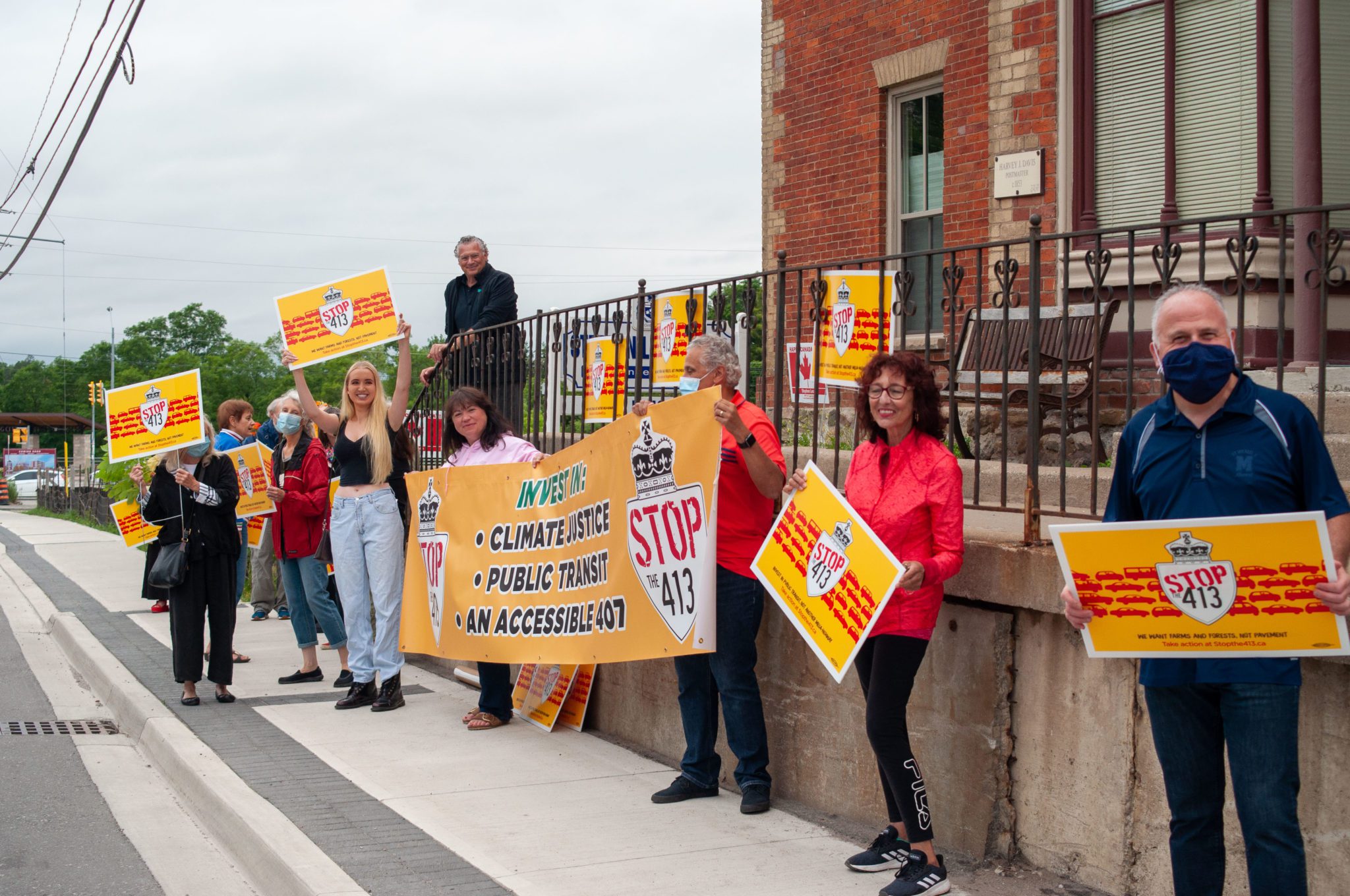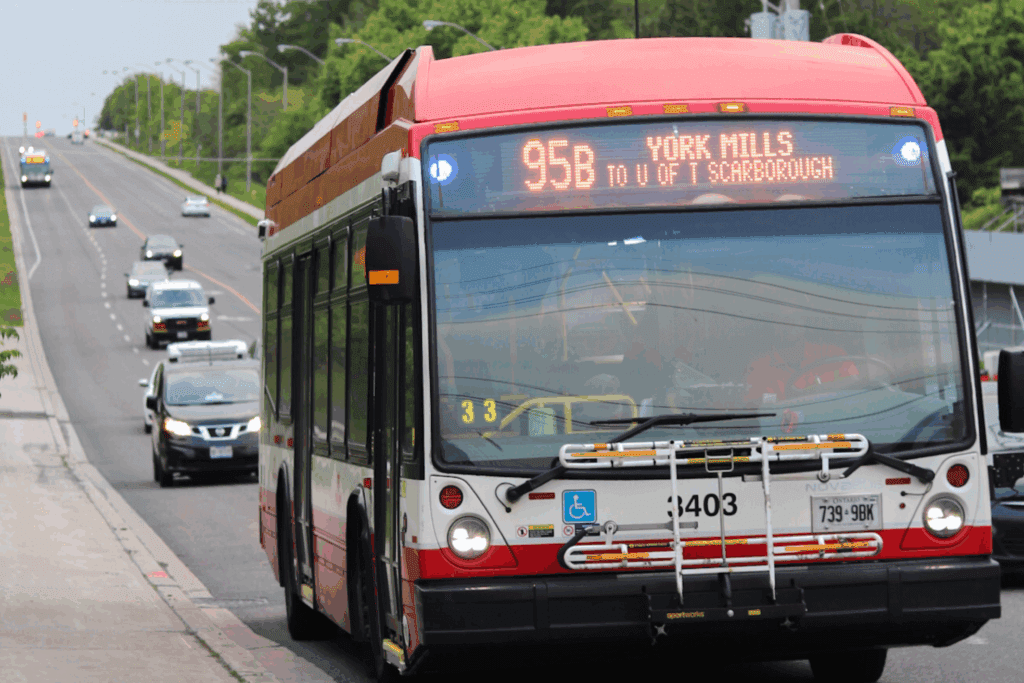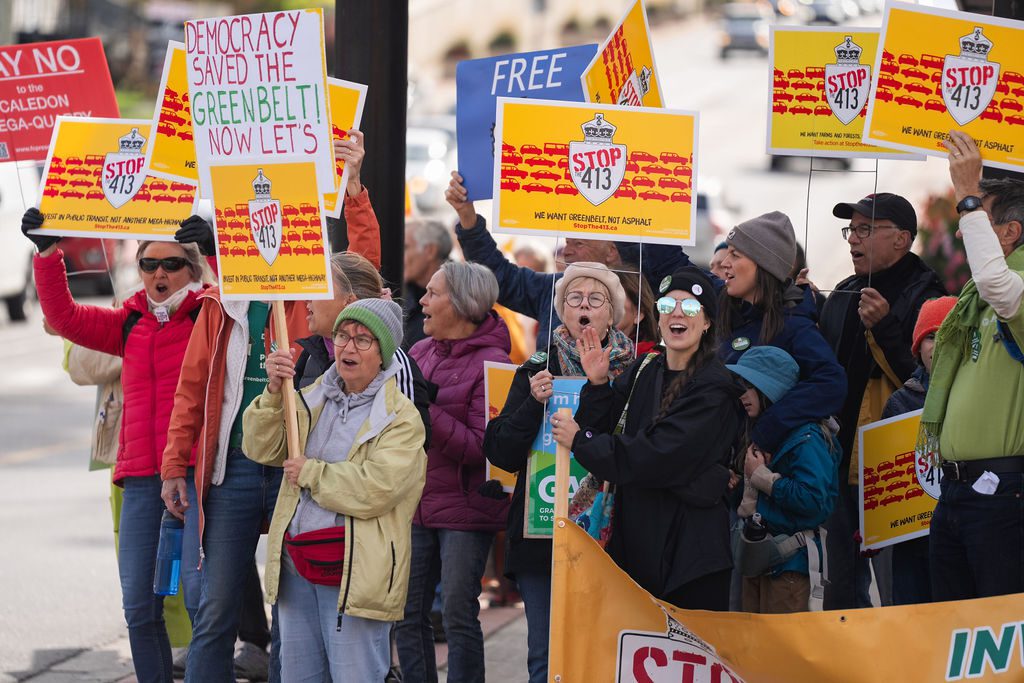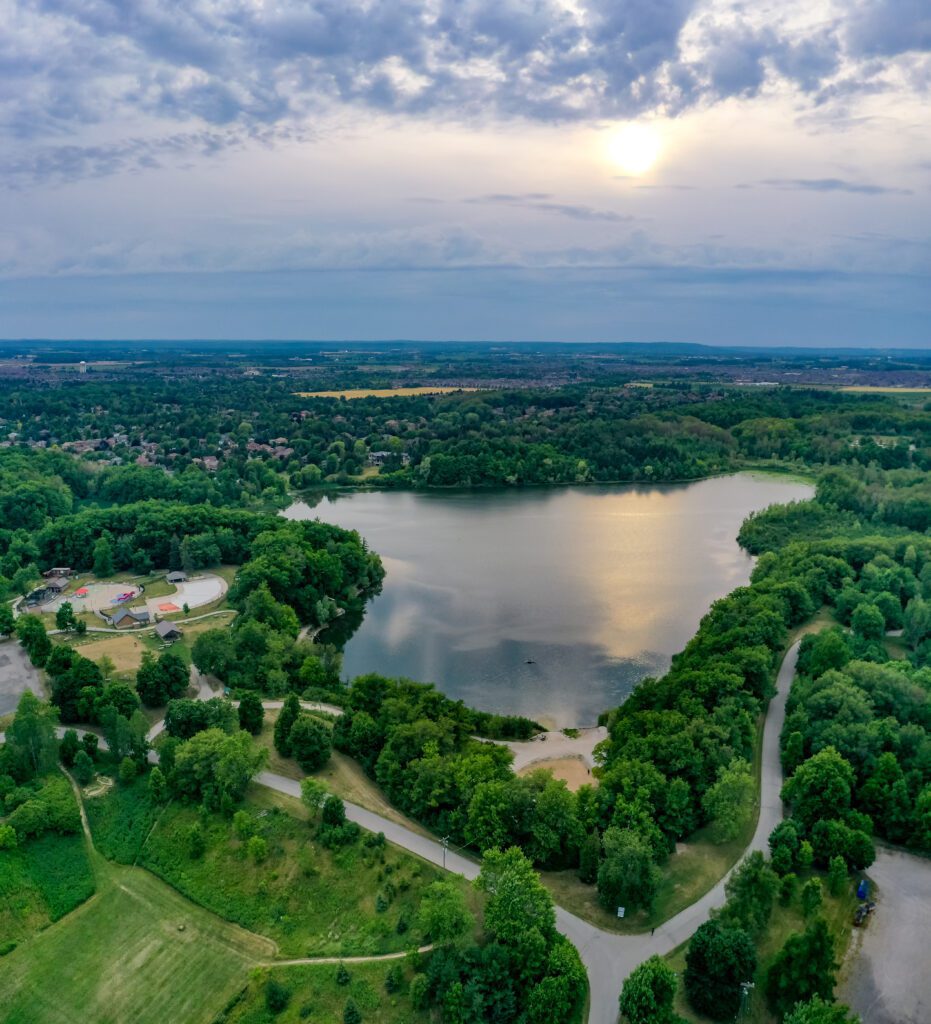Highway 413 has been back in the news lately, and for one very important, and very concerning reason. Premier Ford finally relented and cancelled plans to open the Greenbelt to development but at the same time reiterated his plan to build the highway, including committing unspecified billions of our money towards constructing both Highway 413 and the Bradford Bypass.
Tell Your MPP to Stop Highway 413
There are many reasons why building Highway 413 would ultimately be a disaster for Ontario. We’ve laid out just a of them below…
- 400 acres of the Greenbelt and 2000 acres of farmland would be paved over to make way for Highway 413. That’s 2400 acres of land that houses complex ecosystems, holds some of Ontario’s most productive farmland, and offers places for people to explore and visit. We need more Greenbelt, not less. See the proposed route here.
- Highway 413 is not needed. Highway 407 is located only 15 km to the south of the planned route and follows the same east-west path with intersections at the 401 at Milton and the 400. The 407 is very underused, could accommodate a lot of trucks (none use it now because of the extreme toll costs) and is owned by all of us through the Canada Pension Plan Investment Board. We could save $billions by opening the 407 to trucks and it would make traffic better on the 401 too.
- Highway 413 would only save drivers less than 1 minute on average across the region, and definitely not the 30 minutes that the Ontario government is claiming. Since the journey itself on existing roads only takes about 25 minutes it’s difficult to see how the government came up with that number, but regardless an expert panel estimated in 2018 that the average saving to people’s drive-times would only be between 30-60 seconds across the region.
- It’s going to cost taxpayers billions – but the government won’t say how much. Although the Ontario Ministry of Transportation (MTO) has failed to release updated cost estimates, in 2018 the cost of building the highway was estimated to be over $6 billion dollars. Considering how quickly land prices have increased over the last few years, the cost of expropriating the land alone must have added very significantly to that number. Would you spend upwards of $6 billion to save 30 seconds?
- Highway 413 is likely to be a toll road. MTO has consistently failed to say that the highway would not be tolled. And, it would follow much the same route as Ontario’s shockingly expensive – and not so shockingly underused –existing toll highway, the 407.
- Three words: The Big Sprawl. Earlier this year, the Globe and Mail described Highway 413 as the “$6-billion sprawl accelerator”, because the highway’s route makes it quite clear that it is not about helping existing residents get from A to B, but is part of the government’s ongoing mission to facilitate huge amounts of sprawl development in the GTA. Building the highway would lead to potentially thousands of acres of farmland and green space becoming sprawling warehouses, subdivisions and parking lots. Ontario has an affordable housing problem, but sprawl does not lead to affordable housing, it just creates more and more areas of expensive, single-family car-dependent homes with no access to public transit, local amenities or walkable communities. Building sprawl when we have scarce labour and resources for building homes also means that we have less of these to build affordable homes where we need them inside of cities and towns
- There would be real harm to sites of historic Indigenous importance. Highway 413 could destroy important archaeological sites as the project passes through land that has long been inhabited by the Wendat, and would bisect the sensitive headwaters of four watersheds within the Mississaugas of the Credit First Nation’s territory and impact their physical and cultural heritage, including ceremonial sites, burial sites, and the cultural landscape.
- The Highway would cause real and unavoidable harm to a range of at-risk and endangered species by destroying some of their rare habitats. Some of the species identified by the federal impact assessment agency include the Redside Dace and the Chorus Frog, both endangered in Ontario. You can find more about these species by reading our comprehensive report: Road to Ruin.
- The ones who stand to gain are property developers and land speculators. Journalistic investigations have shown conclusively how both the Highway 413 and Bradford Bypass projects have been heavily influenced by the lobbying of a short list of extremely wealthy landowners and property developers, who just so happen to own huge areas of land around the highways. Many of these are the same developers who were to benefit to the tune of $8.3 billion from the now-reversed Greenbelt removals. These government-linked developers stand to make huge profits if the land around were designated for development and connected with a major highway.
- Highway 413 would cut across streams and rivers a total of 85 times. Every time a road intersects with a water source it degrades it, adding dirt and vehicle pollution to the water and exposing it to huge amounts of road salt each winter. A new 6-lane highway would do significant damage to these waterways.
- We’re in a climate emergency. Building roads creates carbon emissions, and also leads to more carbon emissions from people driving on them. According to research commissioned by Environmental Defence, Highway 413 would cause over 17 million tonnes of additional CO2 emissions by 2050 – coincidentally, the same date by which Canada is supposed to be reaching net-zero emissions.
- Building more highways does not reduce traffic. It’s a principle known as induced traffic or induced demand, and what it means is that the more roads we build the more traffic is on them, as more homes are built in areas not served by public transit, and more people choose – or can only choose – to drive. Consider Highway 401: the 401 is in parts the widest highway in North America, and yet it still has among the worst traffic. Are we just going to keep building more lanes until all of Southern Ontario is a parking lot, or are we going to consider some alternatives?
- Municipalities don’t want it. Almost every municipal and regional council from along Highway 413’s proposed route has voted to either oppose the highway altogether, or to request a full environmental assessment from the federal government. Building the highway now would go against the community’s wishes.
- Public transit alternatives would be far cheaper and ultimately move more people than a new highway. Alternatives suggested by the expert panel, such as full GO Regional Express Rail on the Kitchener and Milton corridors, a new GO corridor to Bolton, and increased bus rapid transit or light rail transit in Brampton and Vaughan, were also shown to cost far less and provide better outcomes to address traffic congestion than Highway 413.

Convinced? and protect 400 acres of Ontario’s Greenbelt.
In an effort to Stop Highway 413, join the Harvest Walk on October 14th! Grassroots activists have organized walks that will be passing through different sections of farmland and green space threatened by the proposed Highway 413. Find out more here: https://environmentaldefence.ca/howtostop413/
This is an updated version of a blog originally written by Environmental Defence’s former Engagement Manager, Rachel Kitchin.










